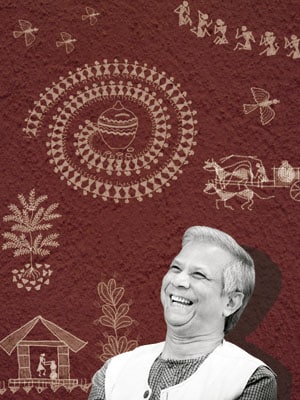
Microfinance in Developing Economies
Microfinance Institutions (MFIs) hold a variety of techniques and opportunities to balance these two frameworks—development and finance
Around the world, there are tens of millions of enterprising poor living in structural and cultural inequality who face little hope of moving past a subsistence life-style. In 1977, and economics professor in Bangladesh, Dr. Mohammad Yunus, began a credit program called the Grameen Bank to provide capital to very poor women without requiring collateral. In 2006 he and his bank won the Nobel Peace Prize. Today, Grameen serves 8.04 million borrowers around the world. Over $8.96 billion in loans have been disbursed to low-income, poor, and very poor clients. Though the economic crisis has caused a slight decline in repayment rates in some developing countries due to increasing food prices, Grameen sees only a 2% default rate on these loans.
Since its inception, microfinance has evolved in astounding ways, incorporating into its practice social and economic development concepts, as well as the principles underlying financial and commercial markets. Microfinance Institutions (MFIs) hold a variety of techniques and opportunities to balance these two frameworks—development and finance. MFIs can be structured as not-for-profit, social or non-loss business, and for-profit businesses, financed by venture and shareholder capital. The opportunity to make money while doing good makes microfinance an appealing industry for many Thunderbird students.
In February, I traveled to Nepal and India, visiting MFIs and banks in order to create a Microfiance Winterim for Thunderbird students. My goal is to create a 3-week course where students will get to meet with various types of MFIs, their funding sources, and their clients. During the course, students will not only get to see the structures that support the microfinance industry, but will also consult with MFIs to identify challenges and increase their efficiency and service to their clients.
During my meetings to set up the winterim, which will be tentatively offered in January 2011, I was sent out to various rural locations to visit field offices, bank branches, and loan groups. I will never forget the 30 minute drive north out of Lucknow, India to a small village, where we stopped and began walking through winding village alleyways. As I turned a corner between homes made of mud and cement, I came face to face with a water buffalo. Making my way around the animal, I found 20 women sitting in the shade on a grass mat. They welcomed me with smiles and murmurs of “Namaste”. These 20 women were loan recipients in the midst of their weekly repayment and savings meeting for Sanchetna Financial Services, an MFI based in Lucknow.
I spoke with the women about their shops, livestock, and agriculture. I asked them if they had all seen an increase in their household income as a result of the loans. All of them had. What were they doing with this money, I asked. The answers from this group and all of the others I continued to meet with were the same: education for their children, better food for their family, and reinvesting back into their businesses. Many of the women were also creating savings, something they had never thought possible before their loans.
I also asked them what they had learned. How was microfinance helping them beyond just providing money? The women began to glow with pride. They all pulled out their passbooks, where their loans and weekly repayments were recorded and pointed to the spot where they signed their name each week. Here, in rural India, where literacy often hovers below 50 percent and most women receive little or no education, was evidence of the power they felt. A signature. Many told me that within their homes they were the only family member to achieve this level of literacy.
Microfinance not only provides women money and opportunity, but empowerment and hope as well. However, with all of the success, only 10% of the world’s poor currently have access to financial services. As the industry continues to grow and evolve it creates wonderful opportunities for Thunderbird to encourage students to carry out the Thunderbird mission to “create sustainable prosperity worldwide”.
[This article has been reproduced with permission from Knowledge Network, the online thought leadership platform for Thunderbird School of Global Management https://thunderbird.asu.edu/knowledge-network/]















